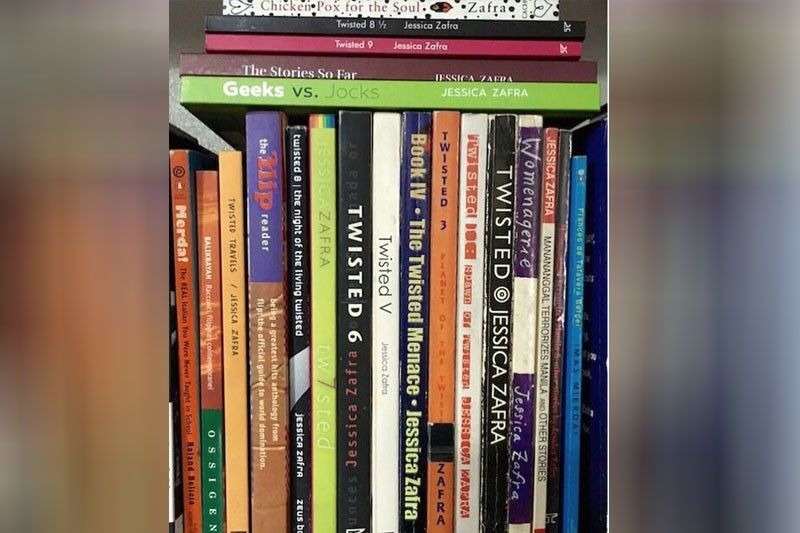Living in the land of ‘Twisted’


In one of my copies of Jessica Zafra’s Twisted books, I find one of my business cards from four years ago. “Editorial assistant,” the title reads under my name, the lowest rung in the publishing ladder. The book, Twisted 8 1/2 is eight years old. It is a slim volume of essays about gadgets, technology, and other Just Jessica Zafra Things™, topics familiar to any reader who’s followed her career since she first published her column in 1994. Twisted 8 1/2 also happens to be one of the first books I’ve written about professionally. My review was published in a youth culture magazine that now only exists online. It was a full circle of sorts, my writing about Zafra’s still charming post-’90s neuroticism (I also used the words “rife” and “obfuscations” — yuck, 2010 me), and all the while never forgetting that it was she who really made me want to be a writer.
There were the usual forays into literature — Marquez, Salinger and Tolkien (I was ecstatic to find in Twisted Flicks that she was a Tolkien fan and loved Peter Jackson’s film adaptations) but it was Twisted 6 that made me see the allure of a column as a piece of cultural real estate — though only a Grade 10 narcissist would think that readers will read their opinions on things, if you’re not of Zafra’s caliber.
But I thought a small town boy like me could offer a different perspective. Along with Zafra’s essays, the pre-Supreme columns of Tals Diaz and Gino De La Paz were my pop cultural radar (I joined Tumblr because of Gino’s column on it. Tumblr literally changed my life). But what about the voice of/for budding homosexuals who liked “high culture” but also appreciated and embraced “lowbrow” without the guilt? It would take years before I’d finally get my own column, this one you’re reading right here. But by then, the internet and social media had made everyone — and anyone — a potential cultural still mean something?
Columnists were the pre-Instagram version of influencers, respected for their taste and ability to sail through the murk of pop music, film and other cultural detritus — which all increased a thousandfold in the age of distraction. There was joy to be had in discovering a song, a movie, or a book that could potentially have a seismic effect on your life, much more something recommended by someone whose voice you related to the most. For many who were raised in the ’90s and read Zafra, she was the voice of their generation, amplifying their angst and anxieties in each of her writings, be it about a sappy phone company commercial, car care, or various degrees of urbanoia.
In the span of eight years, a lot has changed: eBooks have boomed, failed, and are now back again; bookstores have closed but are slowly popping back to life (some of them from the giant company that killed bookstores in the first place); and magazines have closed and are now mostly living online. But it means content is still what everyone looks for. These days, columns have mutated into think pieces, recaps, advice essays, and other personal writings, and they get shared daily on social media.
Next year, Twisted turns 25 and the books are now mostly out of print. I’ve leafed through some of the essays from the first Twisted book to Twisted 9. There are essays on corrupt politicos, presidential promises, unsolved crimes, and traffic along EDSA.
Hey, maybe not much has changed after all.















